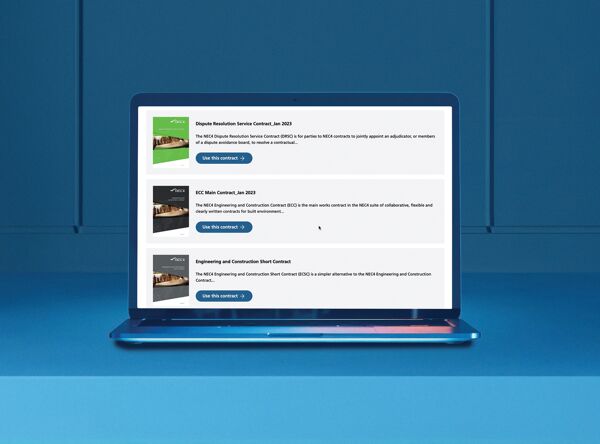
Key Points
- A Conflict Avoidance Pledge was launched in 2018 and now has more than 400 signatories, including many NEC users.
- Along with NEC it was endorsed by the UK government in 2022 as a key policy for effective contracting in The Construction Playbook.
- Subsequent Conflict Avoidance Toolkit and Conflict Avoidance Process initiatives both closely align with NEC processes and should be welcomed by NEC users.
The UK government published a second edition of The Construction Playbook in September 2022 (HM Government 2022) and a third edition is due shortly The aim of the playbook, which originally appeared in 2020, is to improve how public works projects and programmes are delivered (Jackson 2021).
The playbook’s key policy on ‘effective contracting’ identifies NEC as one of the standard contracts to be used. The policy also encourages clients to sign up to the Conflict Avoidance Pledge launched in 2018 (Higgins and Jackson 2023). It is therefore worth looking at how the pledge and its associated initiatives have been progressing since then and what they involve.
Conflict Avoidance Pledge
The Conflict Avoidance Pledge was launched on the Royal Institution of Chartered Surveyors (RICS) website in January 2018 by the Conflict Avoidance Coalition Steering Group (RICS 2024a). It reflects recognition by industry that disputes have a substantial cost and affect working relationships. This led to industry bodies, such as the Institution of Civil Engineers and the Chartered Institution of Civil Engineering Surveyors, as well large infrastructure employers, contractors and consultants, signing the pledge. There are currently more than 400 signatories.
Signing the pledge identifies an organisation as being committed to taking the necessary steps to deal with problems early and amicably, recognising that this can result in better delivery. Signing results in being listed on the Conflict Avoidance Directory, but there are different grades: bronze, silver and gold. These identify the steps taken by each organisation to implement policies and conflict management procedures, as well as provide evidence of collaborative working and engaging in conflict avoidance.
Not surprisingly, most organisations listed are at a bronze level, but the expectation is that more signatories will achieve higher levels as they become familiar with and embed the pledge, and this can be done by applying to the Conflict Avoidance Steering Group. Achieving higher status will be a clear indication to the market of an organisation’s commitment to the pledge. Concerns will also no doubt be raised when a signatory is behaving in a way which is inconsistent with the pledge.
Conflict Avoidance Toolkit
Signing up to the pledge is an important to step, but what does it mean in practice? The Conflict Avoidance Coalition Steering Group’s 2019 Conflict Avoidance Toolkit (RICS 2024b) provides guidance on the steps that can be taken, starting from the pre-contract preparation and going through dispute avoidance early intervention and amicable resolution, as well as dispute resolution if necessary. This is in line with the NEC approach of dealing with issues proactively and in advance, rather than waiting for a problem to arise and only then responding.
Looking at the guidance on pre-contract preparation, the toolkit highlights the need for the contract to be written in simple plain English, avoiding legal terms and jargon, for early warnings to be used and for project management tools to be included. These are all features of NEC, as is the requirement for a viable compensation event procedure.
Similarly, anyone familiar with NEC will recognise some of the other principles highlighted in the toolkit, such as the importance of open communications, as well as the encouragement to consider mediative procedures that involve a neutral party which helps to reach an agreed settlement, in line with what NEC4 option W3 provides for. The toolkit does not mandate a specific form of dispute resolution but sets out the principles which underlie what is considered to be good practice.
Conflict Avoidance Process
As Peter Higgins and I mentioned in our 2023 article, the RICS has also developed a Conflict Avoidance Process, a contractual mechanism designed to help parties identify and resolve emerging disputes at an early stage, thereby avoiding formal and adversarial dispute resolution proceedings. It is a voluntary process that can be used in addition to contractual dispute resolution procedures and the aim is to provide for a relatively informal process that results in a non-binding report within 28 days.
The report is then discussed with the parties, who can choose whether to adopt its conclusions or proceed to a more formal dispute resolution method. There has been international interest in the use of the Conflict Avoidance Process and, by way of example, there have been discussions about its use in Canada on infrastructure projects. This is a useful option to consider if adjudication is seen as too hostile and as a way to avoid the cost and delay inherent in court or arbitration proceedings.
In 2022 the UK government published a model clause intended for public-sector NEC contracts to introduce the Conflict Avoidance Process. That clause has since been updated by the government in collaboration with NEC and is expected to be published together with the next edition of The Construction Playbook.
Incorporating conflict avoidance into NEC
Parties using NEC contracts will already be acting in line with the principles set out in the Conflict Avoidance Pledge and Toolkit and are likely to operate their contracts in a way which will encourage early identification and resolution of issues (Higgins and Jackson 2022). If not already a signatory, it is certainly worth having a look and considering signing up to the pledge.
The Construction Playbook also states that dispute avoidance boards are a potential way to avoid and manage disputes more effectively and, where appropriate, should be engaged with projects from inception to completion. This is what is provided by NEC4 option W3, and NEC4 ECC Practice Note 5 (NEC 2019) provides Z clauses that can be used to introduce a dispute avoidance boards into contracts which are subject to the Housing Grants Construction and Regeneration Act 1996.
In conclusion, the Conflict Avoidance Pledge and its associated initiatives the Conflict Avoidance Toolkit and RICS Conflict Avoidance Process are well designed, well intentioned and entirely complementary to NEC contracts and processes. NEC users should welcome them and engage with them.




